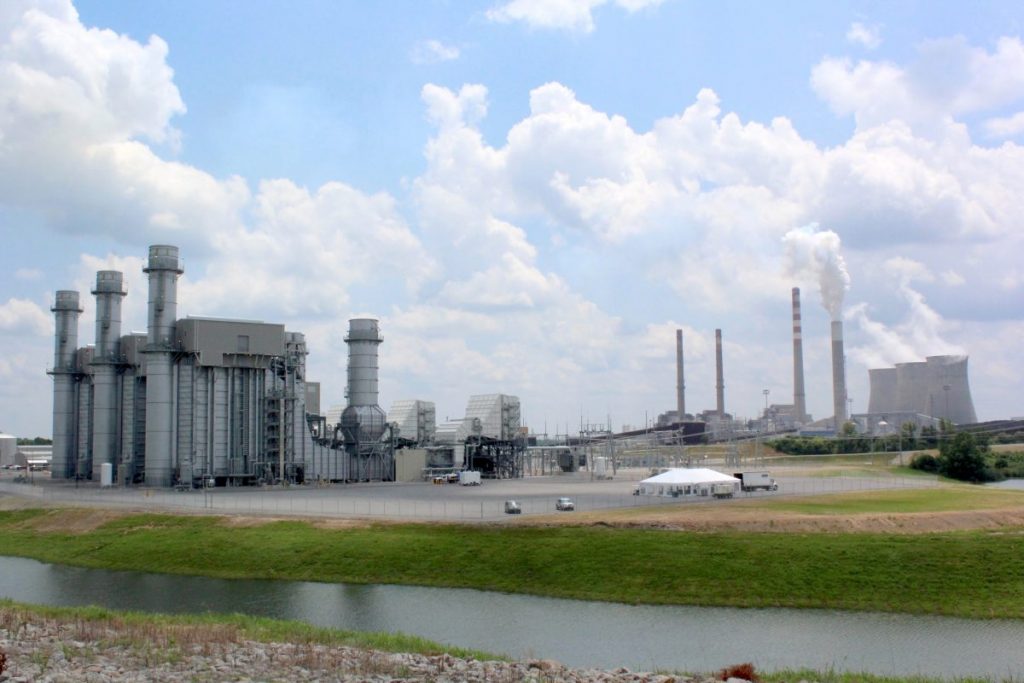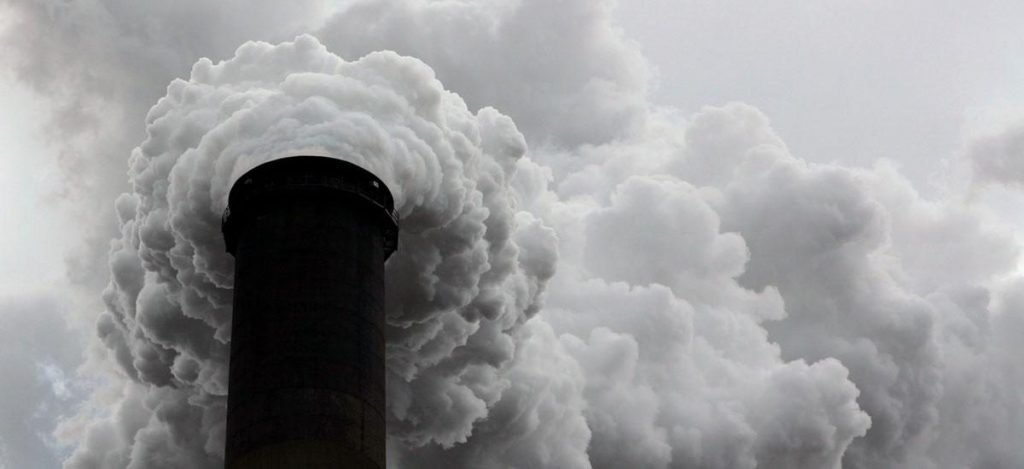News
Trump Power: Industry Analysts Say New Rule Will Not Fuel Coal Comeback
By: Brittany Patterson | Ohio Valley ReSource
Posted on:
When President Trump wants to talk coal, he comes to West Virginia. So it was not surprising that the president visited Charleston just hours after his administration unveiled a long-awaited overhaul of the Obama administration’s signature climate change regulation, the Clean Power Plan.
“We’re cancelling Obama’s illegal, anti-coal-destroying regulations. The so-called Clean Power Plan,” Trump told the cheering crowd.

Earlier that day the Environmental Protection Agency released the new Affordable Clean Energy rule, or ACE, to replace the Clean Power Plan.
The new rule may be the Trump administration’s largest action yet in its quest to end what it calls a “war on coal.” The administration has also rewritten parts of a federal rule on coal ash and it’s working on a plan to subsidize struggling coal plants.
The president credits those measures with fueling a “coal comeback.” But industry experts and even the administration’s own analysts see little evidence that Trump’s policy changes will alter the downward course for coal as it faces stiff competition in the energy market.
Trump Plays His ACE
Obama’s rule, which was never fully implemented, aimed to cut greenhouse gas emissions from power plants by one-third over the coming decades in an effort to stem the effects of climate change. The rule took a broad approach and encouraged states to shift electricity generation away from coal toward cleaner natural gas and renewable energy. It also drew sharp criticism from industry groups and more than half the states in the country.
The new proposal places the onus on states to decide how to reduce emissions from coal-fired power plants. Bill Wehrum, assistant administrator for EPA’s Office of Air and Radiation, told reporters during a press call that the ACE rule aims to “redefine the relationship and relative roles and responsibilities” of federal and state government.
“The key point here is every power plant is different,” he added. “So what our proposed program would do is give states flexibility to take those unique aspects of each of the power plants in their jurisdiction into consideration.”
The draft proposal has been praised by industry supporters and many Republican lawmakers around the Ohio Valley.
Chris Hamilton with the West Virginia Coal Association said coal’s outlook has brightened with the proposal of the ACE rule.
“It will help, there’s no question about it,” he said. “We’re hopeful and we don’t see any reason that would serve as a barrier to investment and the future of coal, coal mining, coal-fired plants.”

No Game Changer
Industry analysts and experts said the replacement regulation has very little chance of bringing the coal industry back across the Ohio Valley, a promise Trump continues to make.
This is largely because the rule focuses on keeping current coal-fired power plants running longer, but encouraging state regulators to work with utilities to install heat-rate upgrades to make operations more efficient.

The challenge for coal plant operators will be still netting a profit after pouring millions of dollars into facilities in the form of efficiency upgrades.
“If a utility could make more money by improving the efficiency of their coal-fired power plant, presumably they already would have done it,” said Trevor Houser, a partner at the independent research company Rhodium Group.
Houser is also skeptical of the president’s claim that the new rule will save electricity consumers money. In regulated power markets — places where utilities are guaranteed a profit — Houser said electricity customers could see their bills rise as they foot the bills for expensive upgrades. In other places where electricity is sold onto the open market, power plants could close, because the amount of money they would need to make for their power would have to go up.

James Van Nostrand, a law professor and director of West Virginia University’s Center for Energy and Sustainable Development, said he thinks the new rule may only help “to the extent that perhaps there are some existing coal plants that will be able to run a little bit longer.”
He said in a world with low natural gas prices and rapidly falling costs for renewable energy generation, it’s extremely hard to make the economics work for coal.
“Because at the end of the day they’ve got to be able to sell their power into very competitive wholesale markets and it’s all a matter of economics,” Van Nostrand said. “And if this doesn’t improve the economics, it’s not really going to make much of a difference in terms of improving the prospects for the coal industry.”
Gas Pains
The Ohio Valley’s coal industry faces additional challenges. Mining in the region has been ongoing for generations. The easy to get seams have been mined, which means it costs more to extract coal here.
“Appalachian coal is also relatively high-cost thermal coal anyway,” said Houser, with the Rhodium Group. “So, the market for coal is shrinking and Appalachia is a relatively high-cost producer.”
These realities were echoed in a recent report released by West Virginia University’s Bureau of Business and Economic Research. The economic forecast predicted the current uptick in West Virginia coal production — about 27 percent since mid-2016 driven largely by exports of metallurgical coal — will level out in the next two years.
From 2020 through 2040, the analysts expect production to continue to drop, hitting 66 million tons by 2040, a 17 percent decline from 2016.
Report co-author Brian Lego said federal coal data can show, to an extent, the impact of federal regulations. He said stricter requirements by the EPA, namely the 2015 Mercury and Air Toxics Standards, have played a role in the industry’s decline over the last decade. But natural gas is by far the larger factor.
As for the impacts of the new ACE rule, Lego said he does not expect it to change the overall trajectory.
“In terms of the competitiveness of coal compared to natural gas over the longer term, that is something that would require a much more significant change in the policy rules,” he said.
More Deaths
Beyond the administration’s rhetoric, the EPA’s analysis of its own rule acknowledges that the proposal has a limited ability to help the coal industry.
Wehrum, the EPA assistant administrator, said the agency expects to achieve reductions in greenhouse gas emissions comparable to those form the Obama rule. This is largely due to the shift the power sector has already undergone toward natural gas and renewable energy, he said.
“The industry continues to transform in front of our eyes,” he said. “The world that we’re addressing today in the proposed rule is different than the world that was addressed when the [Clean Power Plan] was put in place originally.”
In the agency’s own in-depth analysis of the rule, EPA predicts the amount of coal produced in the U.S. is expected to decrease across the board.
In Appalachia, coal mines would produce at least 78 percent less coal in 2035 than they did last year.

Under the proposed ACE rule, some outcomes are expected to shift dramatically including impacts to human health, according to EPA’s analysis.
The agency estimates as many as 1,400 people each year could die prematurely of heart and lung disease, linked to exposure of fine soot particles released from smokestacks. Cases of asthma and other respiratory diseases could increase by 15,000.
“Air quality will decrease and not improve as it would have under the Clean Power Plan,” said Bill Price, a Charleston-based organizing manager with the Sierra Club. “I think we’ll see more unhealthy communities in regards to asthma and in regards to premature deaths.”
Utility Reaction
While many utilities welcomed the ACE rule, they don’t appear to be re-thinking their plans for coal-fired power.
A spokesperson for Dominion Energy, which operates seven coal-fired power plants in Virginia and West Virginia, said the company is sticking with its strategy to install more renewable energy and reduce coal generation.
In an emailed statement, Rob Richardson said the company is “committed to a greener and cleaner energy future.”
American Electric Power told S&P Global it does not intend to change its current plan, which is to focus on modernizing the energy grid, expanding renewable energy, and reducing carbon emissions.
FirstEnergy Corp. spokesperson Jennifer Young said the company is still reviewing the proposed rule to determine its impacts on the Harrison and Fort Martin power plants in West Virginia. She said the company support’s EPA’s move to give states more latitude in regulating power plant emissions, but added FirstEnergy has already made significant reductions.
“Like the rest of the industry, we have already achieved significant reductions in CO2 emissions since 2005 and expect to continue to reduce emissions going forward,” Young wrote.
In a statement, Chris Perry, president and CEO of the Kentucky Association of Electric Cooperatives said the new proposal is encouraging.
“The potential of the new proposal to maintain reliability while also potentially reducing compliance costs for coal-based generation is an important factor in a coal state like ours,” he said. “Without this important shift, the Clean Power Plan threatened both the reliability and affordability of the electricity provided by Kentucky co-ops.”
Three coal-fired power plants, two in Kentucky and one in West Virginia, are still slated to close by 2020.
Partner station WVPB reporter Roxy Todd contributed to this story.

